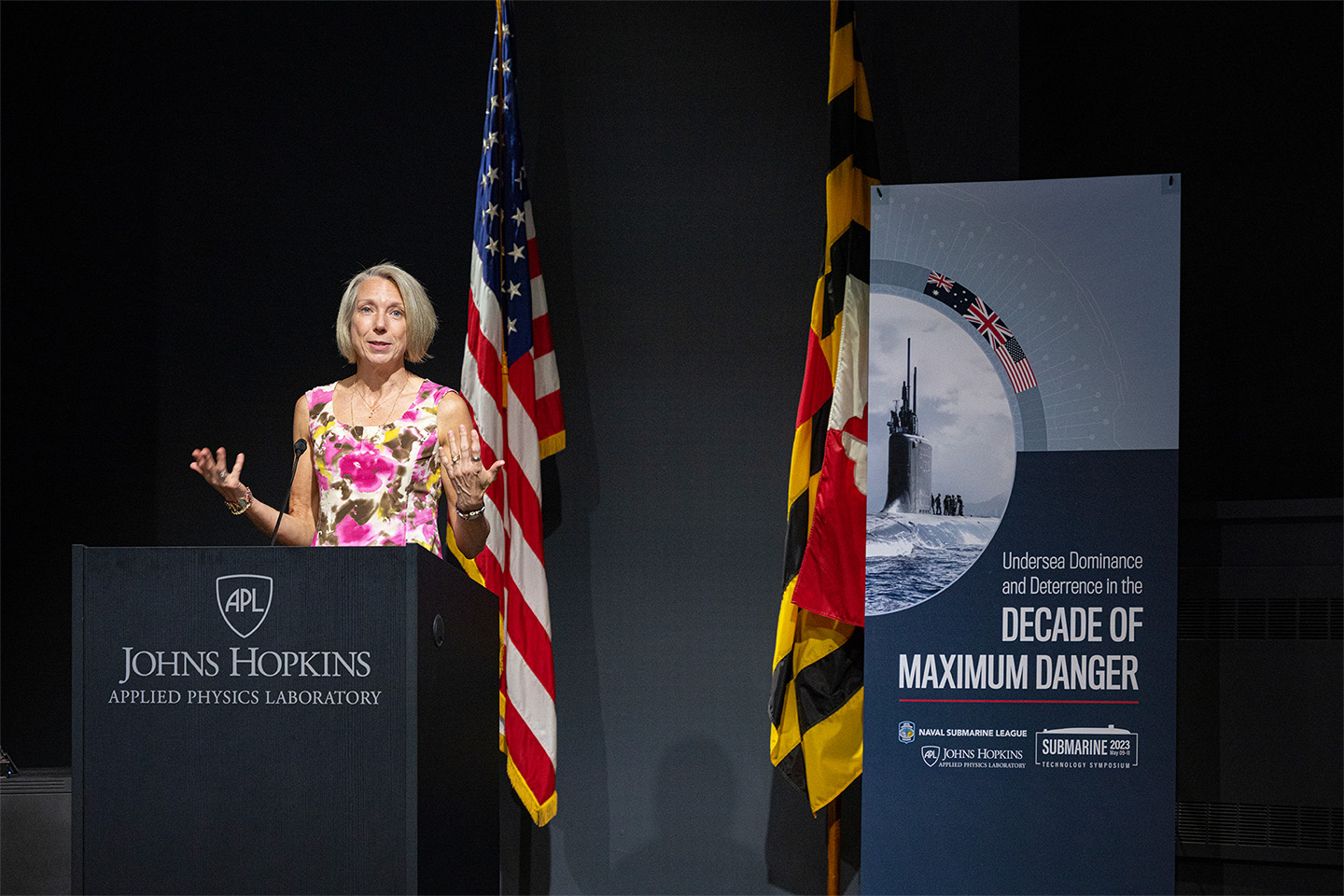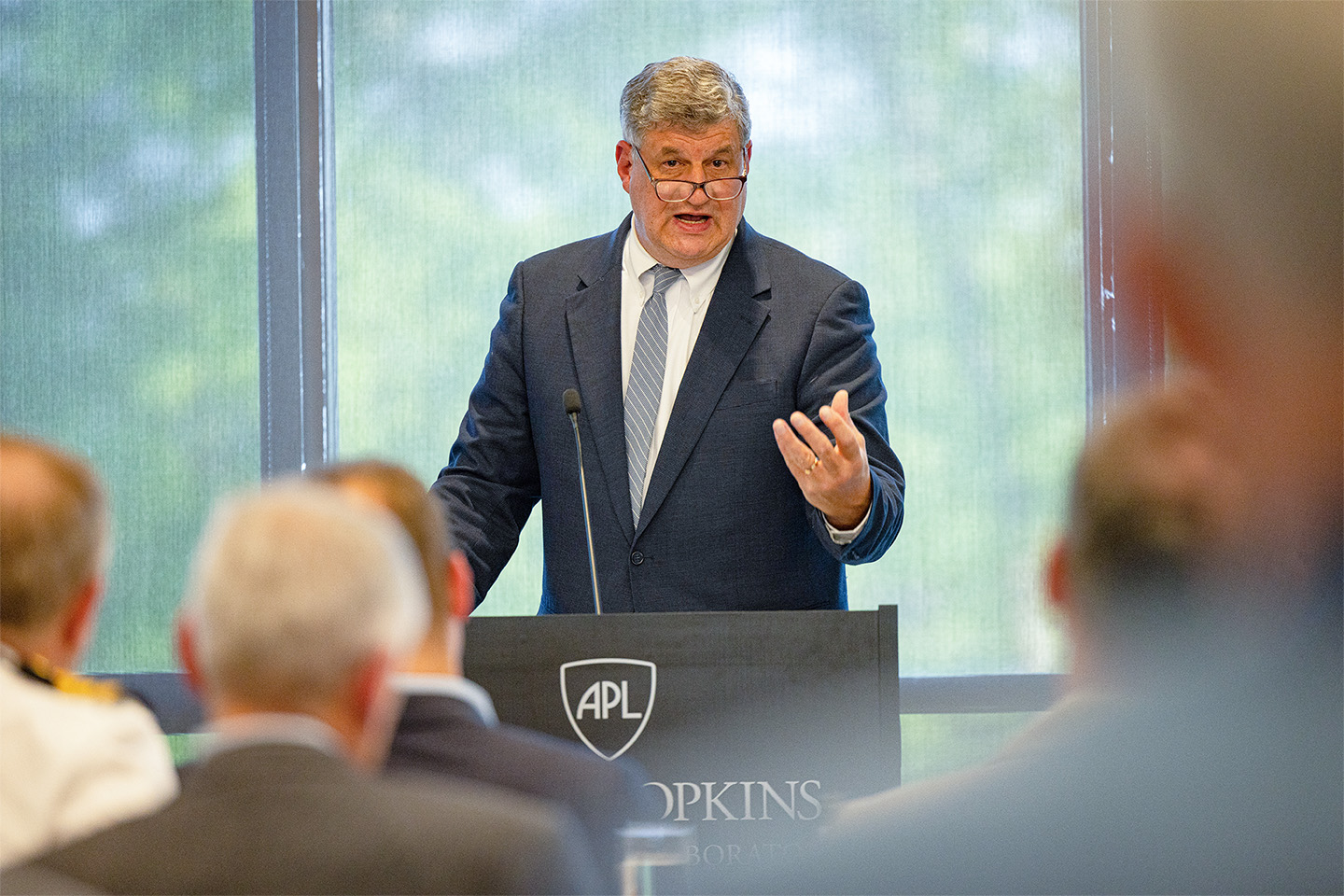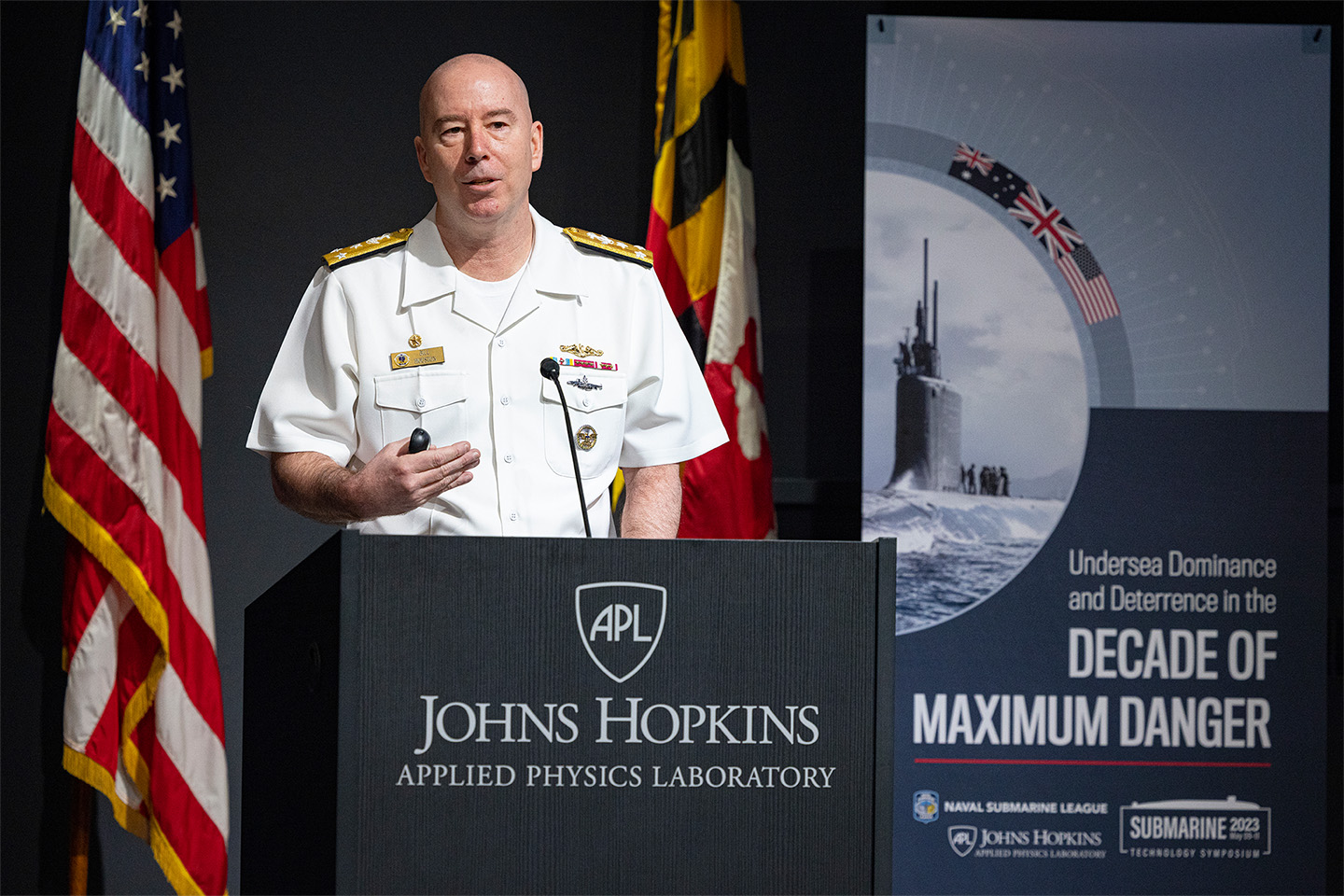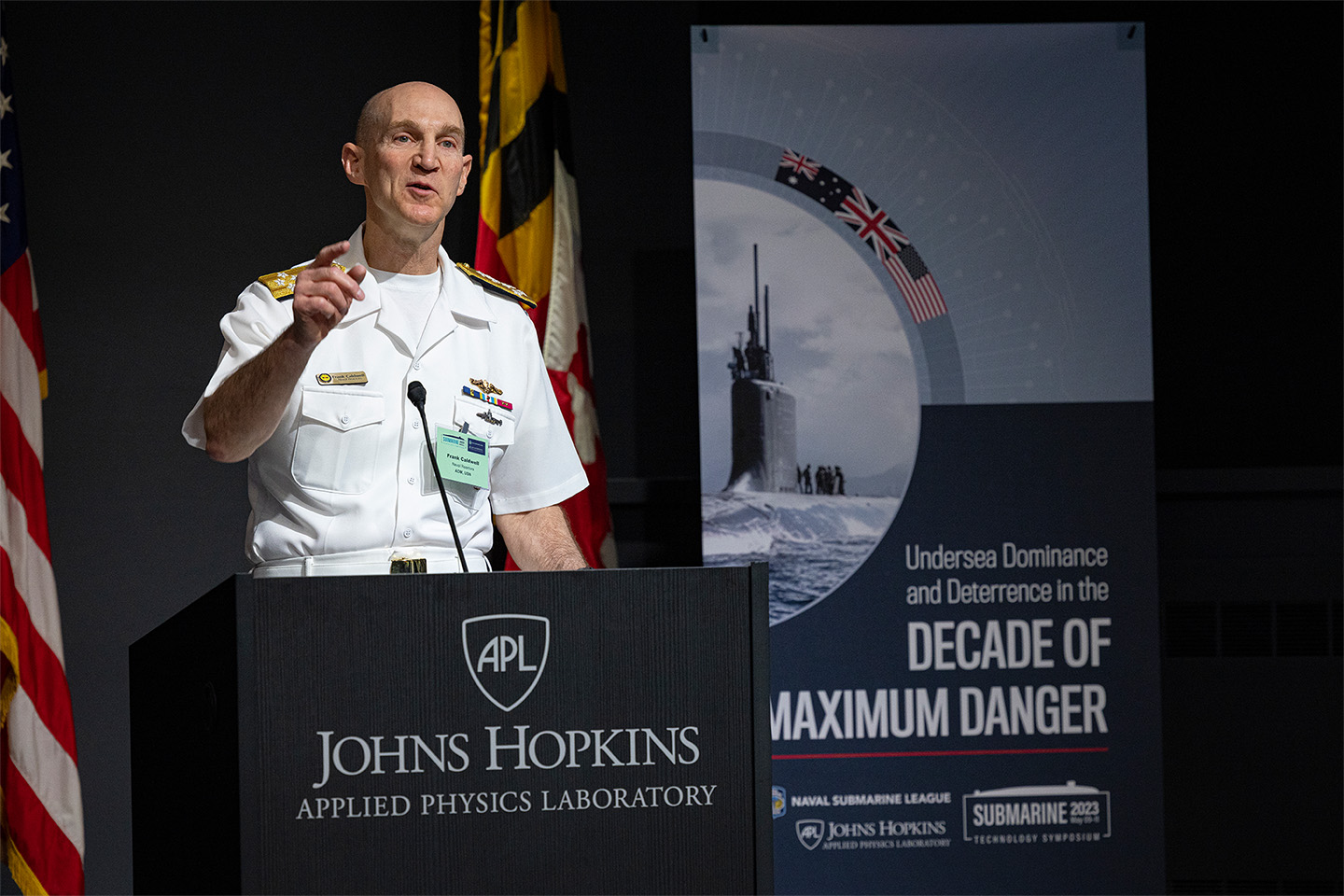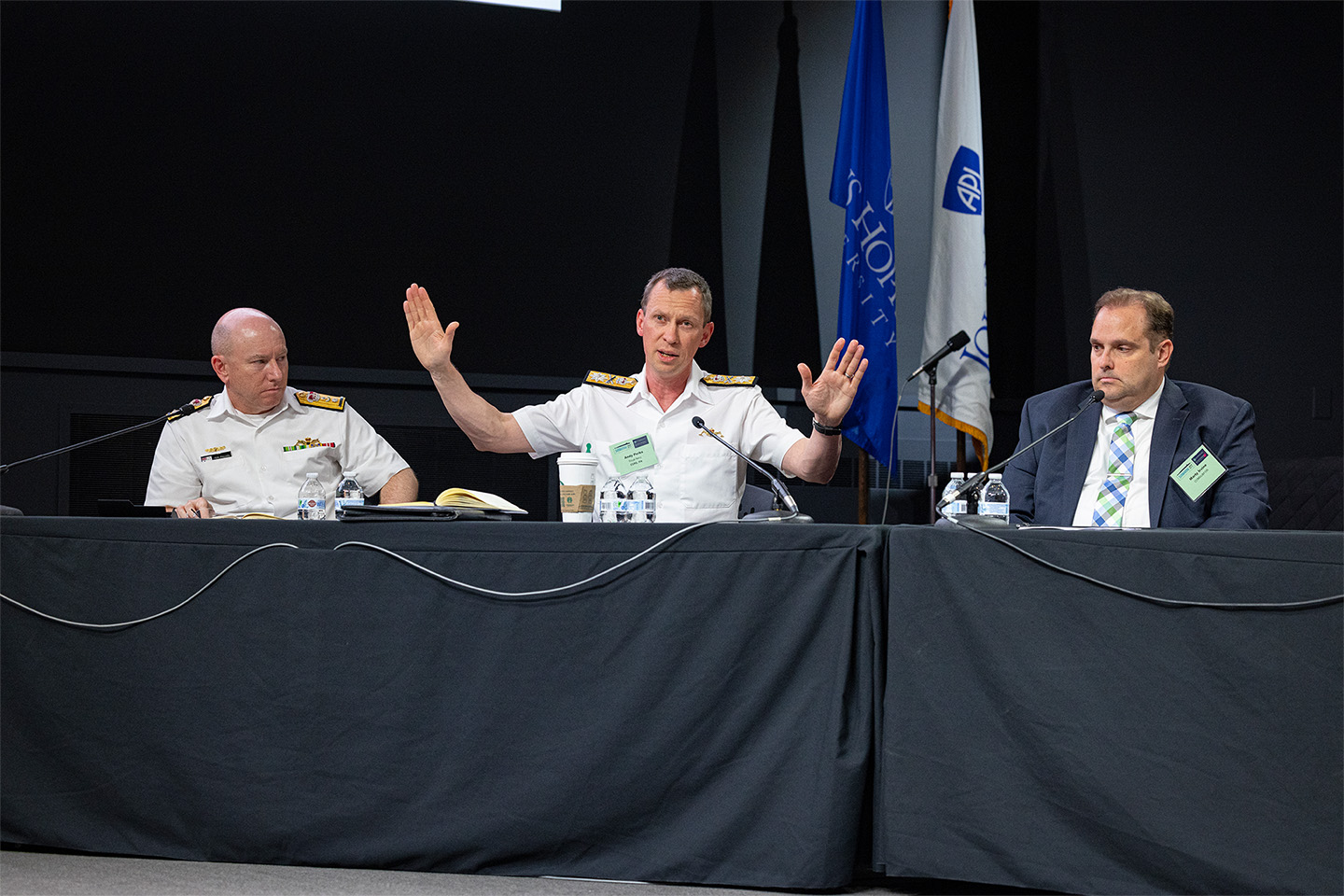Press Release
Submarine Technology Symposium Focuses on Maintaining the Advantage in ‘The Decade of Maximum Danger’
From May 9 to 11, the Kossiakoff Center at the Johns Hopkins Applied Physics Laboratory (APL) in Laurel, Maryland, teemed with more than 600 members of the Submarine Force, industry, laboratories, academia, warfare centers, and acquisition and intelligence communities, who gathered for the 35th annual Submarine Technology Symposium (STS). The three-day event, organized by APL and the Naval Submarine League, centered on the theme, “Undersea Dominance and Deterrence in the Decade of Maximum Danger.”
This focus on the next 10 years is inspired by events both national and international. While the U.S. continues to have one of the most lethal and capable undersea forces in the world, its adversaries — particularly China and Russia — are expending resources in an attempt to erode that advantage in this domain.
The nation is moving quickly to modernize the fleet, maintain its edge and enhance its relationship with allies in this critical decade and beyond. The U.S. submarine community is united around maintaining a sense of urgency in order to execute plans, preserve asymmetric advantage and ensure the nation is ready to fight — now.
“If there is one community that can align quickly and come together rapidly to tackle a seemingly unsurmountable challenge, it is this one,” said Lisa Blodgett, head of APL’s Force Projection Sector, in her opening address.
Retired Vice Adm. Joe Tofalo, STS general chair, repeated that message in his call to order and opening remarks. “The increasing capabilities of our opponents, combined with the challenges of maintaining our own fleet while simultaneously modernizing it, make it imperative that we work together to develop to tools and techniques we need to face the challenges of this decade head-on,” he said.
The symposium kicked off with a session on assessing adversary capabilities. Subsequent sessions explored the modernization of strategic deterrence; maintaining overmatch in the undersea domain; enhancing U.S. alliances and partnerships; and developing, fielding and maintaining the undersea force at the speed of competition.
Keynote speakers throughout the symposium included Vice Adm. Jeffrey Trussler, director of Naval Intelligence; Jay Dryer, director, Strategic Capabilities Office; Vice Adm. Johnny Wolfe, director, Strategic Systems Programs; Vice Adm. William Houston, commander, Submarine Forces; Ron O’Rourke, Congressional Research Service; Rear Adm. David Goggins, special assistant to the assistant secretary of the Navy (research, development and acquisition) for Australia/U.K./U.S.; the Hon. William LaPlante, undersecretary of defense for acquisition and sustainment; and Adm. Frank Caldwell, director, Naval Nuclear Propulsion Program.
Camille Daniel, assistant program area manager for Submarine Warfare at APL, served as the program chair.
APL first collaborated with the Naval Submarine League to organize the STS in 1988. The symposium was conceived as a classified forum where technologies relevant to capabilities of submarines and related systems could be examined and advanced by various experts. Today, STS is considered the premier technical conference on submarine-related technologies.
